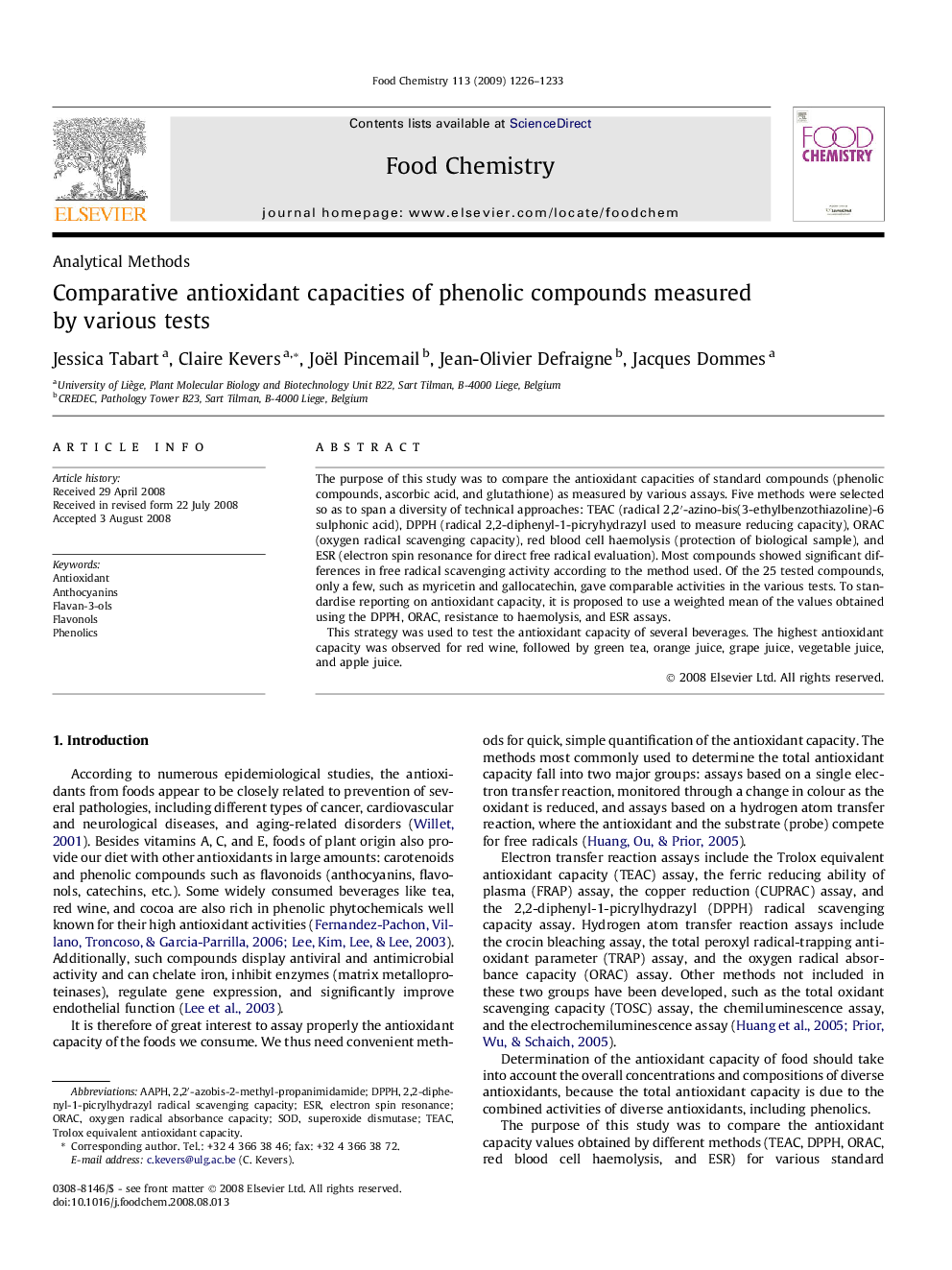| Article ID | Journal | Published Year | Pages | File Type |
|---|---|---|---|---|
| 1188989 | Food Chemistry | 2009 | 8 Pages |
The purpose of this study was to compare the antioxidant capacities of standard compounds (phenolic compounds, ascorbic acid, and glutathione) as measured by various assays. Five methods were selected so as to span a diversity of technical approaches: TEAC (radical 2,2′-azino-bis(3-ethylbenzothiazoline)-6 sulphonic acid), DPPH (radical 2,2-diphenyl-1-picryhydrazyl used to measure reducing capacity), ORAC (oxygen radical scavenging capacity), red blood cell haemolysis (protection of biological sample), and ESR (electron spin resonance for direct free radical evaluation). Most compounds showed significant differences in free radical scavenging activity according to the method used. Of the 25 tested compounds, only a few, such as myricetin and gallocatechin, gave comparable activities in the various tests. To standardise reporting on antioxidant capacity, it is proposed to use a weighted mean of the values obtained using the DPPH, ORAC, resistance to haemolysis, and ESR assays.This strategy was used to test the antioxidant capacity of several beverages. The highest antioxidant capacity was observed for red wine, followed by green tea, orange juice, grape juice, vegetable juice, and apple juice.
